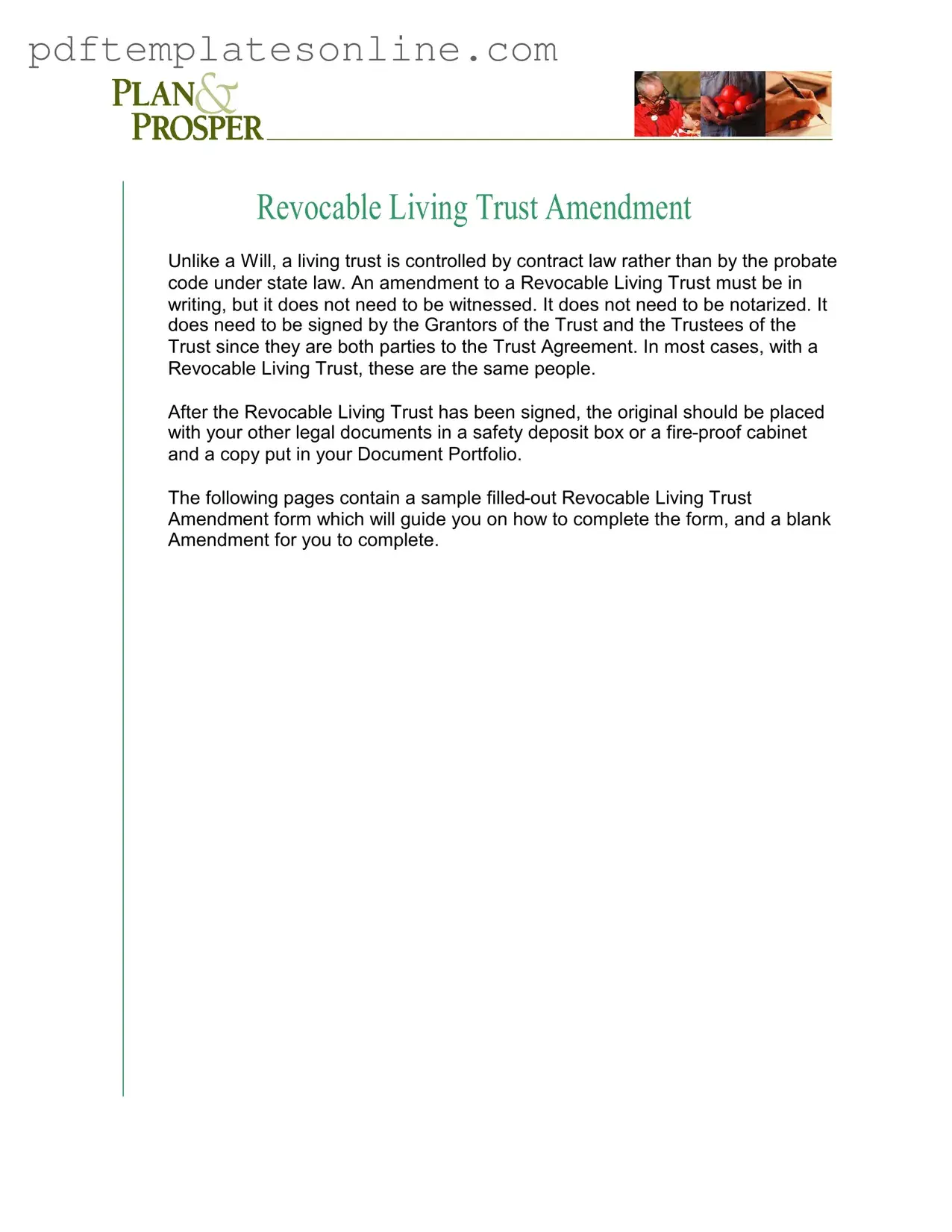Completing a Trust Amendment form can be straightforward, but several common mistakes can lead to complications. One frequent error is failing to provide the correct date. The date of the amendment is crucial, as it establishes when the changes take effect. Omitting or incorrectly entering this information can create confusion regarding the amendment's validity.
Another mistake involves not clearly identifying the parties involved. The form should specify both the Grantor(s) and Trustee(s). If names are misspelled or titles are not used correctly, it may lead to disputes or challenges regarding the authority of the individuals involved. It is essential to double-check that all names match those listed in the original Trust Agreement.
People often overlook the requirement for signatures. While the amendment does not need to be witnessed or notarized, it must be signed by both the Grantor(s) and Trustee(s). Neglecting to include these signatures can render the amendment ineffective. Ensure that all necessary parties have signed before finalizing the document.
Additionally, some individuals may forget to reference the specific article of the Trust Agreement being amended. This reference provides clarity on what aspect of the Trust is being modified. Without this detail, it can be challenging to ascertain the intention behind the amendment, potentially leading to legal complications in the future.
Another common issue is not properly storing the completed amendment. After signing, it is important to place the original document with other legal documents, such as in a safety deposit box or a fire-proof cabinet. Failing to do so may result in the amendment being lost or forgotten, undermining the intent behind the changes.
Lastly, some people neglect to keep copies of the amendment. It is advisable to maintain a copy in a Document Portfolio for personal records. This practice ensures that all parties have access to the most current version of the Trust Agreement, which can prevent misunderstandings and disputes later on.
